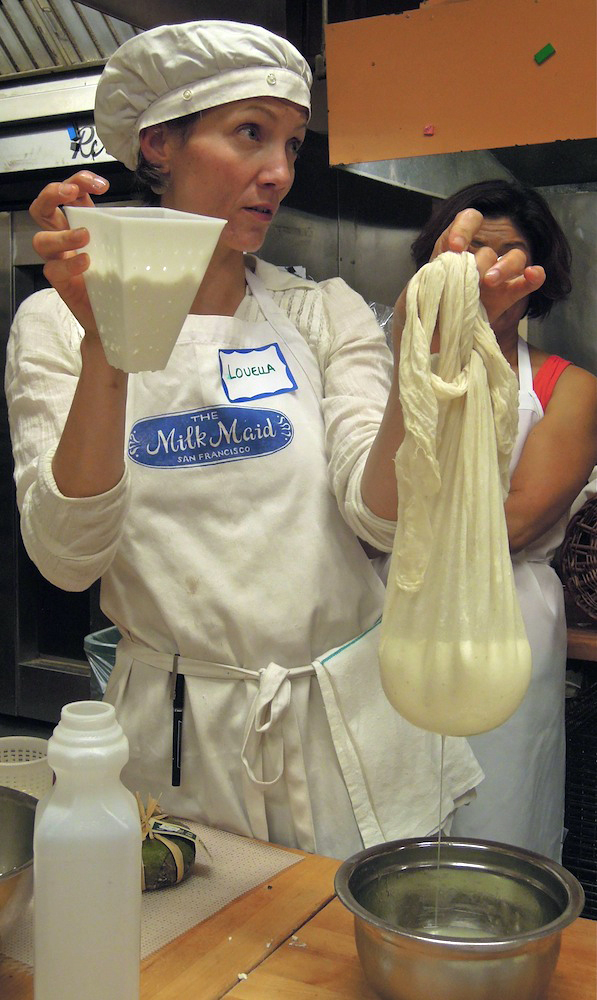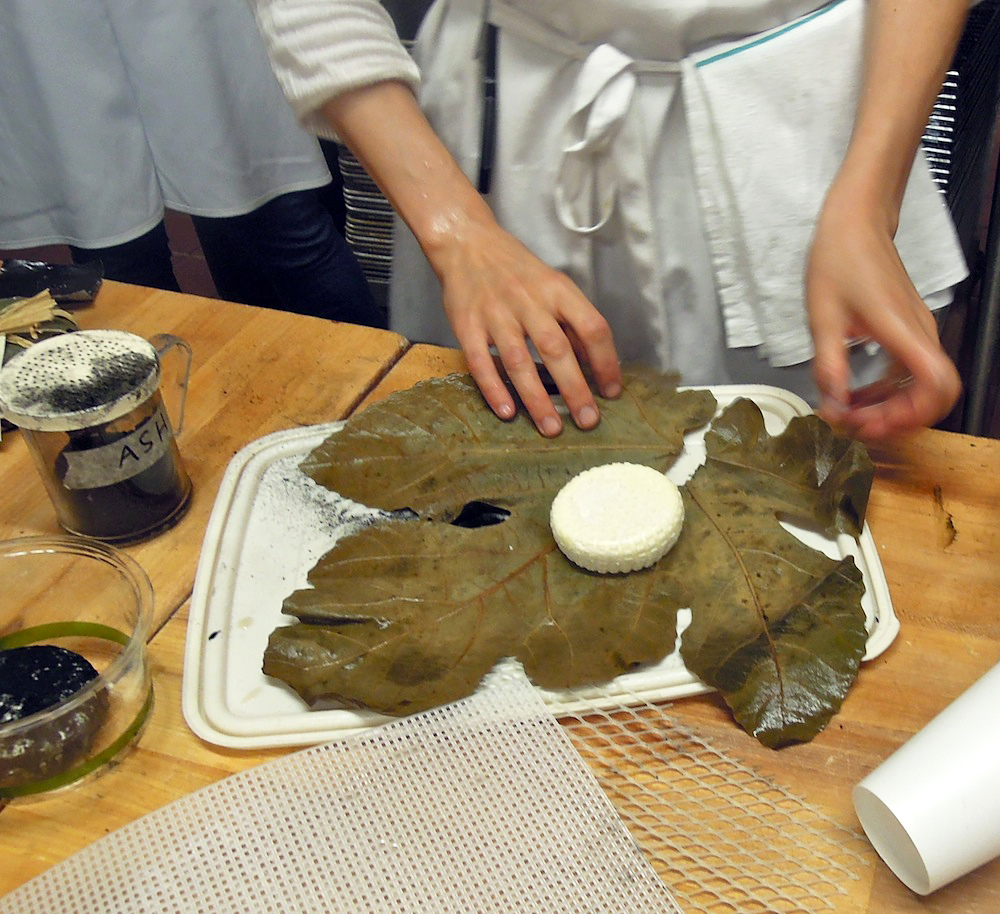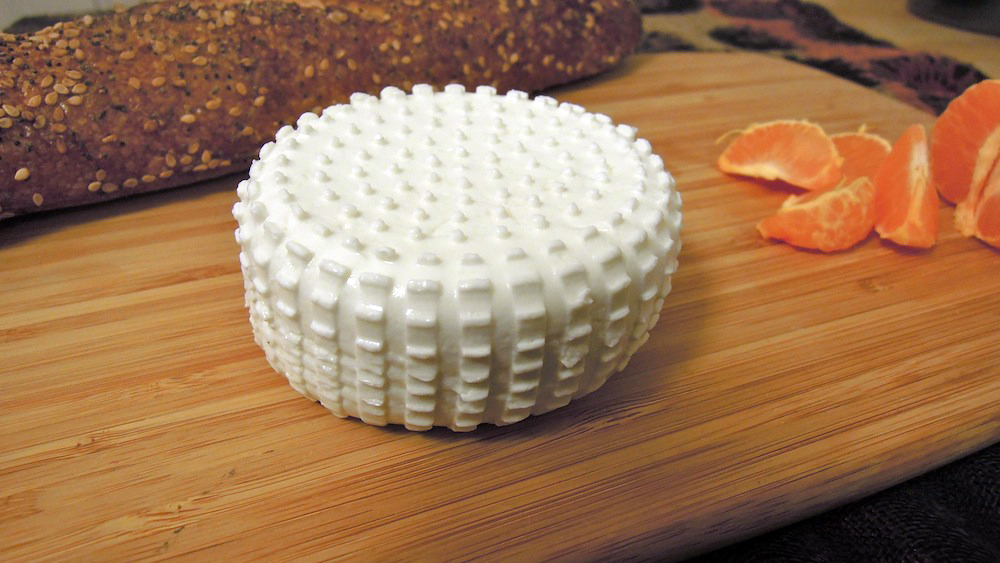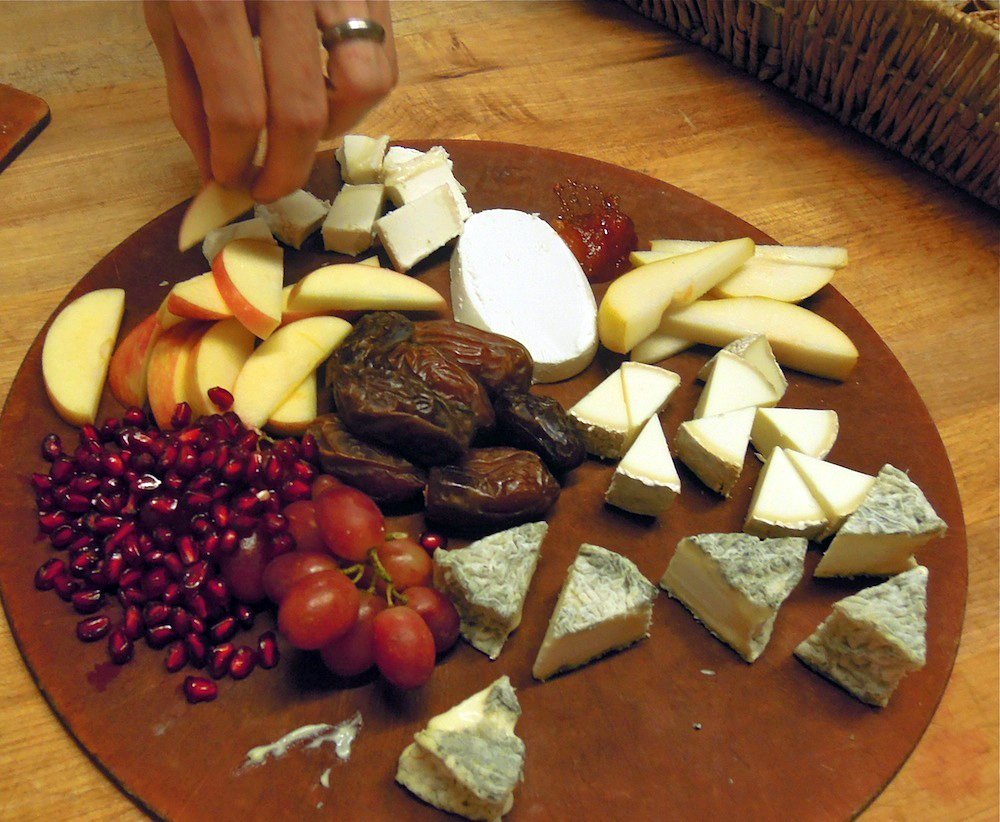
I’m gaga for goat cheese. When I saw a little sign at Berkeley’s Cheese Board Collective announcing a goat cheese class, I was all over it. One evening last week, two dozen eager, cheese-maker-wannabes were welcomed by platters laden with dates, pears, persimmons and several varieties of goat cheese to get us in the mood. The Bonne Bouche, with its squiggly gray, ash-ripened crust and pungent creamy interior disappeared quickly among this herd of goat cheese lovers.
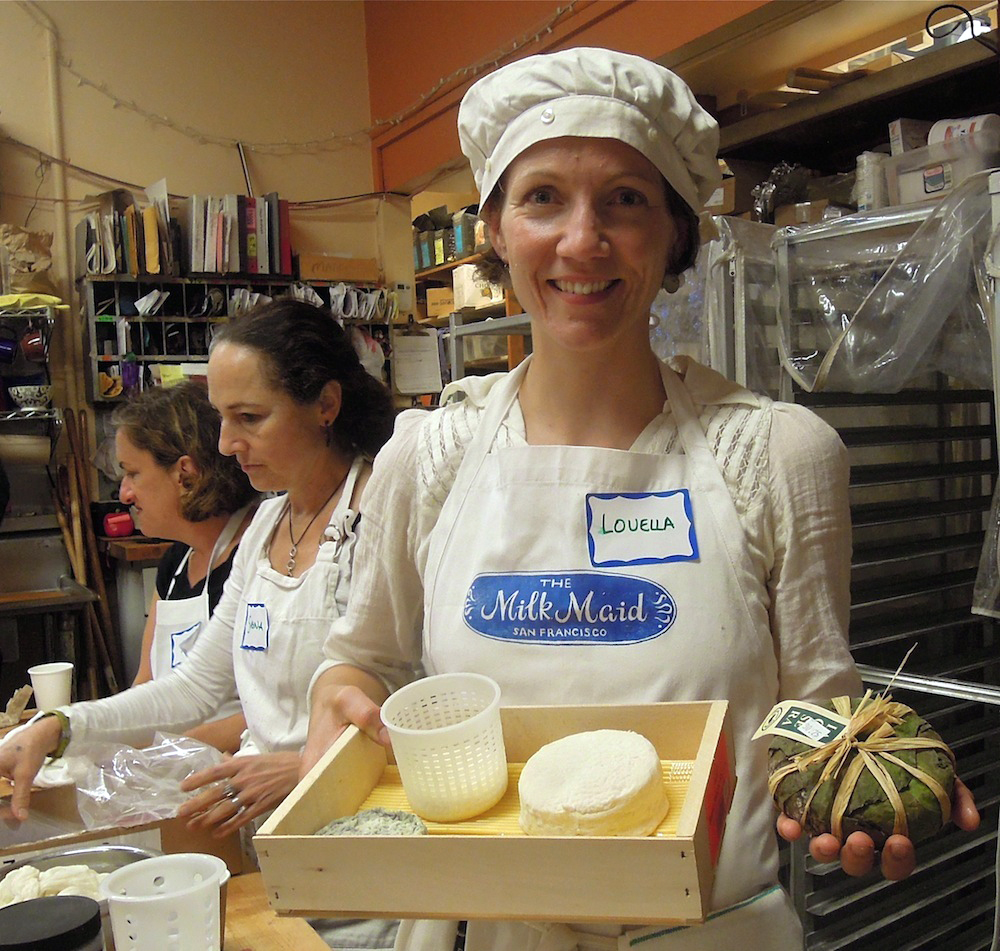
Then we met our instructor, the lovely Louella Hill, better known as the SF Milkmaid, who, in her old fashioned milk maid cap looked like she just stepped out of an illustration from a 19th century book of nursery rhymes.
Hill told us that her love affair with cheese started on a sheep farm in Tuscany, twelve years ago and then waxed poetical on her obsession:
"Cheesemaking is an art form that asks for patience. It’s a puzzle that challenges your brain and asks you to trust time. It encourages us to embrace the invisible microbial world, and that can’t be rushed."
Then, on to the basics of her simple, but versatile recipe that is suited to making soft, fresh chevre or a complex, molded cheese. The fresh chevre we would go home with could be eaten in a day or so, or left to age with a pinch of added mold spores (geotrichium candidum) to turn it into a distant cousin of the Bonne Bouche.
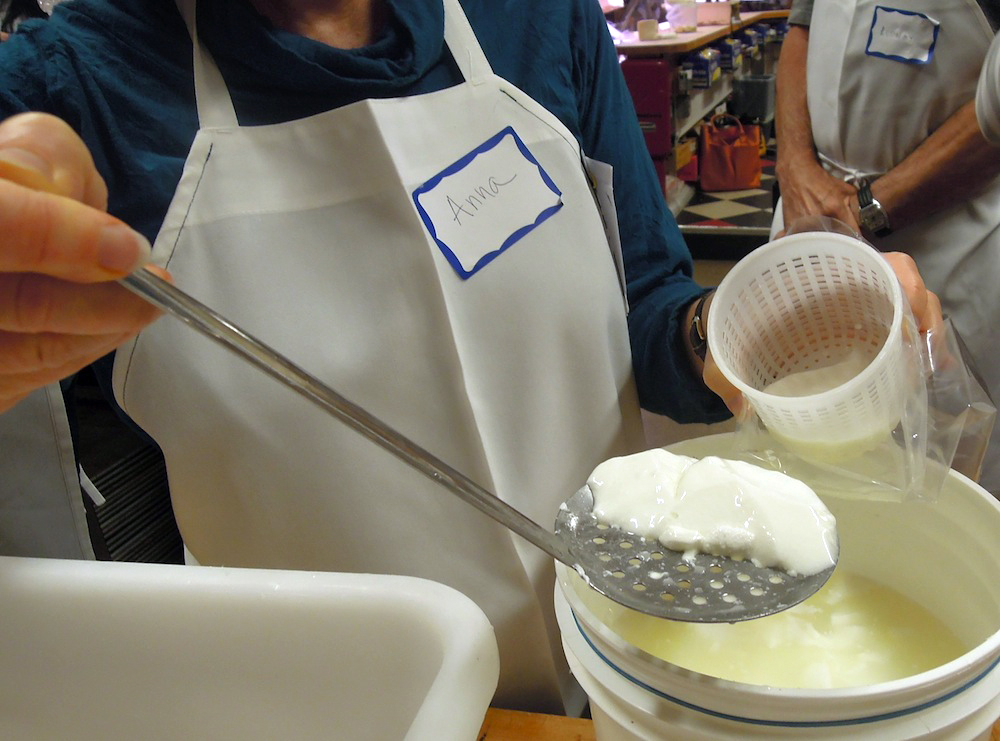
With an animal lover’s tender gaze, Hill confided that cheese is better from a sheep, cow or goat that you have a personal connection to. But if you don’t happen to have your own goats and hillside, she recommends buying Summerhill Dairy Goat milk. And the only other ingredients needed are cultured buttermilk, and a drop each of calcium chloride and rennet (both available at the Cheese Board).
